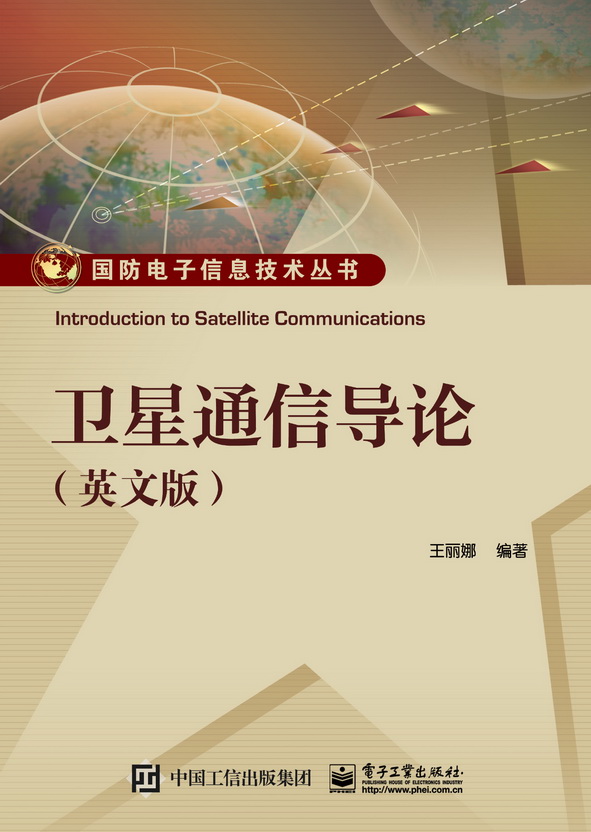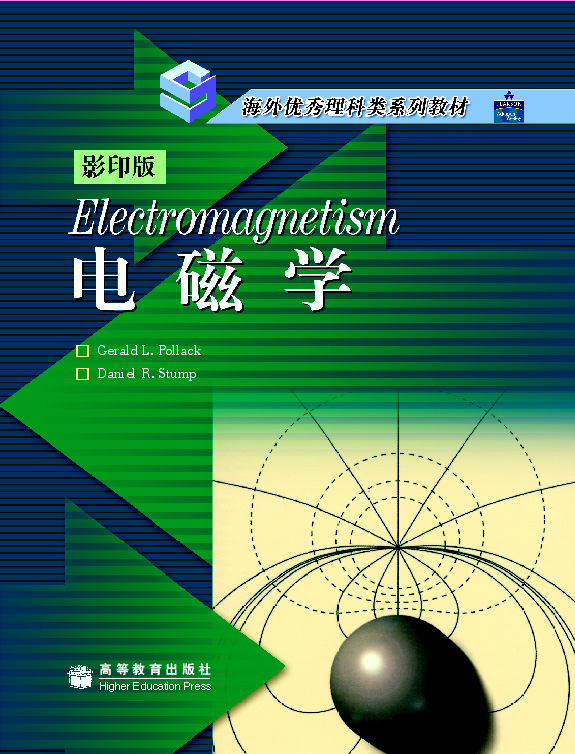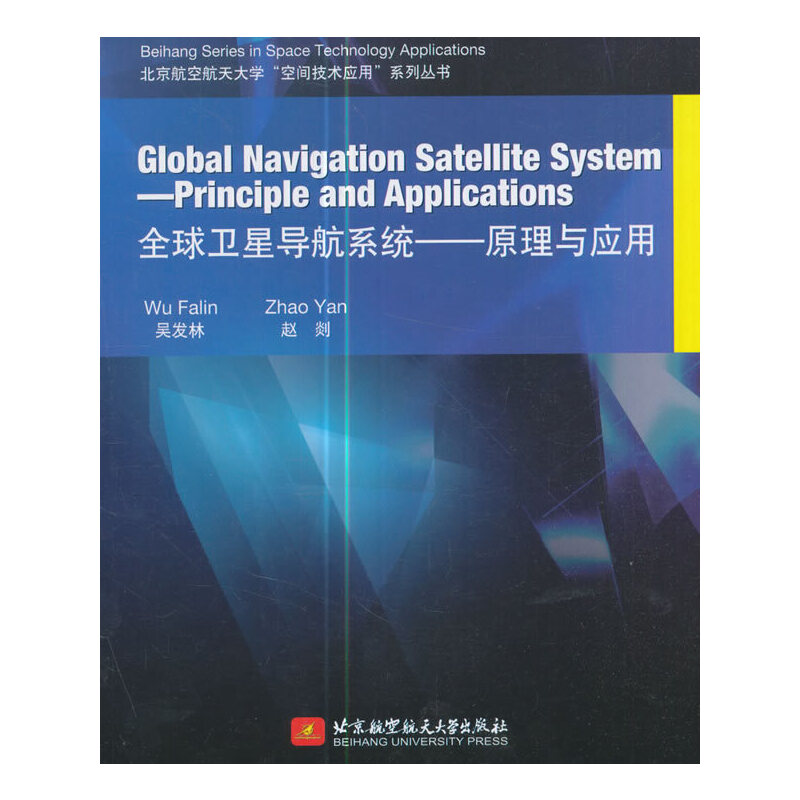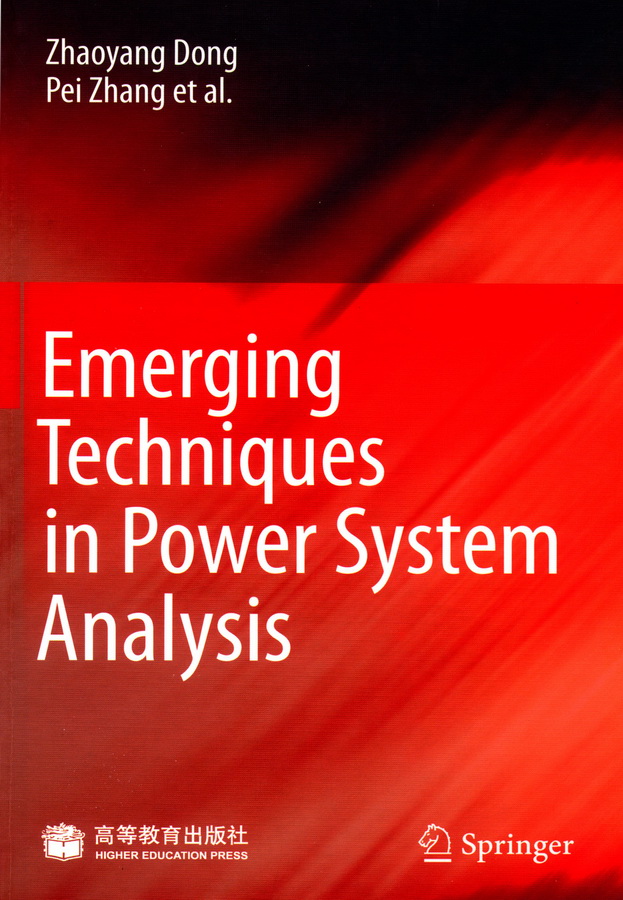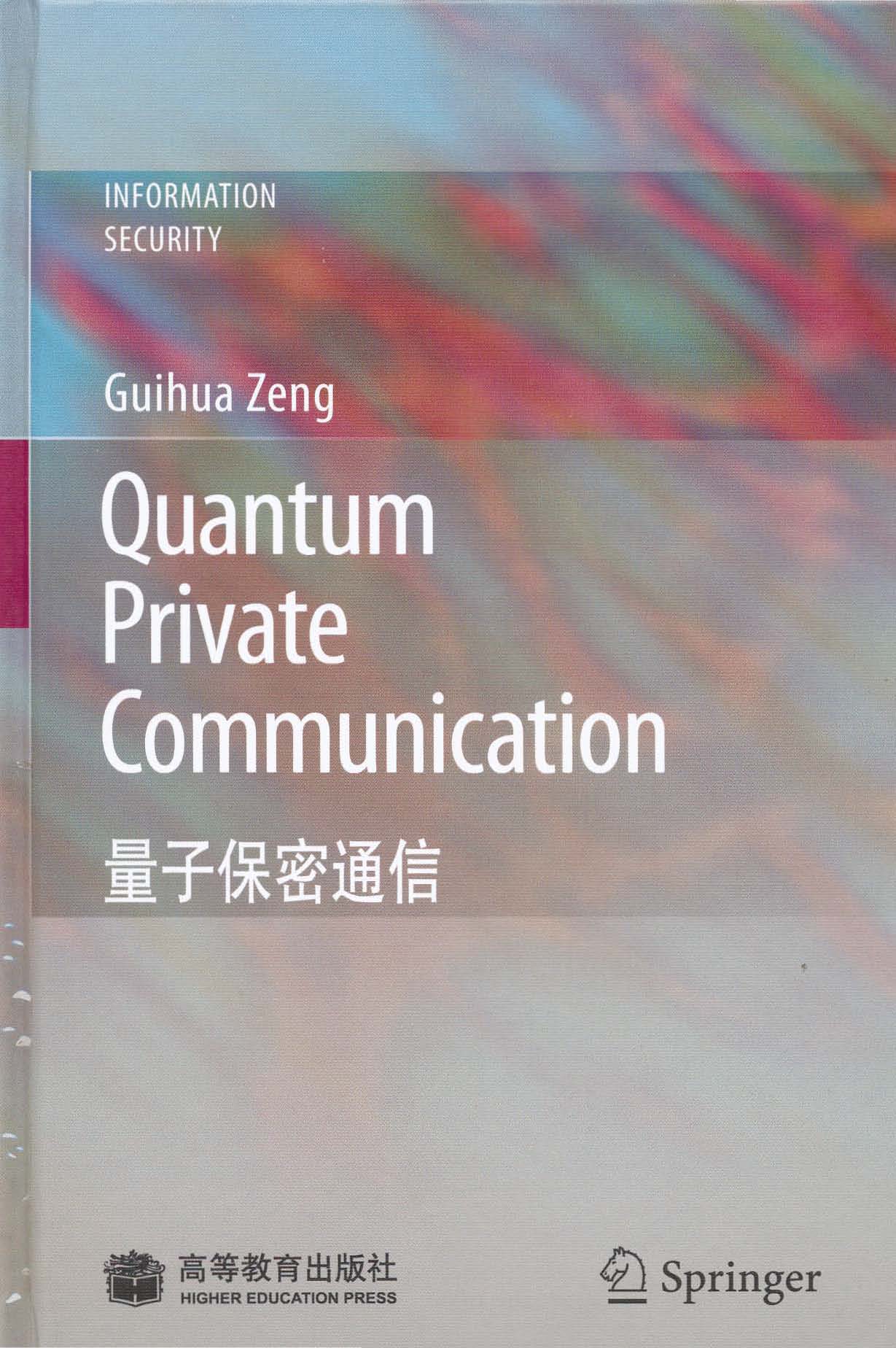卫星通信导论(英文版)
定价:¥48.00
作者: 王丽娜
出版时间:2017-10
出版社:电子工业出版社
- 电子工业出版社
- 9787121327131
- 295008
- 2017-10
内容简介
本书除了包含基础理论和技术的相关内容外,力求充分反映卫星通信的最新技术、最新发展和最新成果。本书可供高等院校通信工程专业、电子信息专业本科生阅读,旨在带领学生了解和掌握卫星通信的相关知识以及卫星通信领域的新技术和新发展,引导学生学习卫星通信的兴趣。本书的编写工作得到了北京科技大学和国家自然科学基金项目的支持。
目录
Chapter 1 Introduction
1.1 A Brief History of Satellite Communications
1.1.1 International Activities
1.1.2 Domestic Activities
1.2 Characteristics of Satellite Communications
1.3 System Elements
1.3.1 Space Segment
1.3.2 Ground Segment
1.4 Satellite Elements
1.4.1 Communication Subsystem
1.4.2 Antennas Subsystem
1.4.3 Attitude and Orbit Control Subsystem
1.4.4 Telemetry, Tracking, Command and Monitoring Subsystem
1.4.5 Power Subsystem
1.5 Types of Satellite Orbit
1.5.1 Low Earth Orbit (LEO)
1.5.2 Medium Earth Orbit (MEO)
1.5.3 High Earth Orbit (HEO)
1.5.4 Geostationary Earth Orbit (GEO)
1.6 Use of Frequencies
1.7 Summary
References
Problems
Chapter 2 Orbital Mechanics
2.1 Orbital Theory
2.1.1 Equations of Satellite's Orbit
2.1.2 Kepler's Three Laws of Planetary Motion
2.1.3 Orbit of a Satellite
2.1.4 Determining the Satellite Location in the Orbit
2.1.5 Orbital Elements
2.2 Determining Look Angle
2.2.1 The Subsatellite Point
2.2.2 Elevation Angle Calculation
2.2.3 Azimuth Angle Calculation
2.2.4 Specialization to Geostationary Satellites
2.2.5 Visibility Test
2.3 Orbital Perturbations
2.3.1 Longitudinal Changes: Effects of the Earth's Oblateness
2.3.2 Inclination Changes: Effects of the Sun and the Moon
2.4 Orbital Determination
2.5 Orbital Effects in Communications Systems Performance
2.5.1 Doppler Shift
2.5.2 Range Variations
2.6 Summary
References
Problems
Chapter 3 Earth Stations
3.1 Earth Station Elements
3.2 Site Selection and Layout of Earth Stations
3.2.1 Site Selection of Earth Stations
3.2.2 Layout of Earth Stations
3.3 Earth Stations and Ground Antennas
3.3.1 Antennas for Fixed Satellite Services
3.3.2 Antennas for Broadcast Satellite Services
3.3.3 Antennas for Mobile Satellite Services
3.3.4 Antennas for Store and Forward (Machine to Machine Service)
3.3.5 Antennas for TTC&M
3.4 Summary
References
Chapter4 Satellite Link Design
4.1 Introduction
4.2 Basic Transmission Theory
4.3 System Noise Temperature and G/T Ratio
4.3.1 Noise Temperature
4.3.2 Calculation of System Noise Temperatures
4.3.3 Noise Figure and Noise Temperature
4.3.4 G/T Ratio for Earth Stations
4.4 Link Design
4.4.1 Design of Downlinks
4.4.2 Design of Uplinks
4.5 Summary
References
Problems
Chapter 5 Modulation and Multiple Access
5.1 Introduction
5.2 Analogue Amplitude Modulation
5.3 Analogue Frequency Modulation
5.4 Digital Modulation
5.4.1 Filtering and Bandwidth Considerations
5.4.2 Binary Phase Shift Keying (BPSK)
5.4.3 Quadrature Phase Shift Keying (QPSK)
5.4.4 Derivative PSK Modulation Schemes
5.5 Practical Satellite Modems
5.6 Multiple Access Methods
5.6.1 Network Architectures
5.6.2 Traffic Multiplexing
5.7 Multiple Access, and Assignment Strategies
5.7.1 Frequency Division Multiple Access (FDMA)
5.7.2 Time Division Multiple Access (TDMA)
5.8 Satellite-Switched TDMA and Onboard Processing
5.9 Spread Spectrum and Code Division Multiple Access (CDMA)
5.9.1 Spread Spectrum for Satellite Communications
5.9.2 Code Division Multiple Access (CDMA)
5.10 Packet Access Techniques
5.10.1 ALOHA Schemes
5.10.2 Enhancements to ALOHA
5.11 Hybrid Access Techniques, and Comparisons
5.12 Summary
References
Problems
Chapter 6 Error Control
6.1 Introduction
6.2 Channel Characteristics
6.2.1 Additive White Gaussian Noise (AWGN)
6.2.2 Doppler Effect
6.2.3 Multipath and Shadowing
6.2.4 Other Considerations
6.3 Channel Capacity
6.4 Coded Systems
6.4.1 Types of Code
6.4.2 Types of Channel
6.5 Error Detection Strategies
6.6 Implementation of Error Detection on Satellite Links
6.7 Forward Error Correction
6.8 Convolutional Codes
6.9 Binary Block Codes
6.10 Coding for Bursty Channels
6.11 Concatenation
6.12 Turbo Codes
6.13 Coding for Bandwidth-Limited Conditions
6.14 Application Considerations
6.15 Low-Density Parity-Check (LDPC) Codes
6.15.1 Decoding LDPC Codes
6.15.2 Encoding LDPC Codes
6.16 Luby Transform (LT) Codes
6.16.1 LT Encoding
6.16.2 LT Decoding
6.17 Raptor Codes
6.18 Spinal Codes
6.18.1 Encoding Spinal Codes
6.18.2 Decoding Spinal Codes
6.19 Summary
References
Problems
Chapter 7 Satellite Navigation and Positioning System
7.1 Introduction
7.2 Transit Navigation Satellite System
7.2.1 System Reliability and Availability
7.2.2 Constellation
7.2.3 Spacecraft
7.2.4 Ground System
7.3 GPS Navigation and Positioning System
7.3.1 GPS Signals
7.3.2 Modernized GPS
7.4 GLONASS Navigation and Positioning System
7.5 Galileo Navigation and Positioning System
7.5.1 Galileo Segment
7.5.2 Frequencies and Signals
7.5.3 Services
7.6 Beidou Navigation and Positioning System
7.7 Summary
References
Chapter 8 Satellite Emergency Communication System
8.1 Introduction
8.2 Characteristics and Construction Principles
8.2.1 Characteristics of Emergency Communication
8.2.2 Construction Principles
8.3 Communication System
8.3.1 Analysis of Satellite Emergency Communication System
8.3.2 Selection of Satellite Emergency Communication System
8.4 Disaster Management and Response
8.4.1 Disaster Management Cycle
8.4.2 Disaster Response
8.5 Disaster Management and Information and Communication Technology
8.6 Satellite-Assisted Disaster Management
8.7 Emergency Information Dissemination: Systems and Protocols
8.7.1 Examples of Existing Alerting Systems
8.7.2 Satcom/Satnav Systems for Emergency Information Delivery
8.7.3 Message Format for Exchanging Emergency Alerts
8.7.4 Alert Message Transmission Protocols
8.7.5 Satellite Systems and Protocols Comparison
8.8 Summary
References
1.1 A Brief History of Satellite Communications
1.1.1 International Activities
1.1.2 Domestic Activities
1.2 Characteristics of Satellite Communications
1.3 System Elements
1.3.1 Space Segment
1.3.2 Ground Segment
1.4 Satellite Elements
1.4.1 Communication Subsystem
1.4.2 Antennas Subsystem
1.4.3 Attitude and Orbit Control Subsystem
1.4.4 Telemetry, Tracking, Command and Monitoring Subsystem
1.4.5 Power Subsystem
1.5 Types of Satellite Orbit
1.5.1 Low Earth Orbit (LEO)
1.5.2 Medium Earth Orbit (MEO)
1.5.3 High Earth Orbit (HEO)
1.5.4 Geostationary Earth Orbit (GEO)
1.6 Use of Frequencies
1.7 Summary
References
Problems
Chapter 2 Orbital Mechanics
2.1 Orbital Theory
2.1.1 Equations of Satellite's Orbit
2.1.2 Kepler's Three Laws of Planetary Motion
2.1.3 Orbit of a Satellite
2.1.4 Determining the Satellite Location in the Orbit
2.1.5 Orbital Elements
2.2 Determining Look Angle
2.2.1 The Subsatellite Point
2.2.2 Elevation Angle Calculation
2.2.3 Azimuth Angle Calculation
2.2.4 Specialization to Geostationary Satellites
2.2.5 Visibility Test
2.3 Orbital Perturbations
2.3.1 Longitudinal Changes: Effects of the Earth's Oblateness
2.3.2 Inclination Changes: Effects of the Sun and the Moon
2.4 Orbital Determination
2.5 Orbital Effects in Communications Systems Performance
2.5.1 Doppler Shift
2.5.2 Range Variations
2.6 Summary
References
Problems
Chapter 3 Earth Stations
3.1 Earth Station Elements
3.2 Site Selection and Layout of Earth Stations
3.2.1 Site Selection of Earth Stations
3.2.2 Layout of Earth Stations
3.3 Earth Stations and Ground Antennas
3.3.1 Antennas for Fixed Satellite Services
3.3.2 Antennas for Broadcast Satellite Services
3.3.3 Antennas for Mobile Satellite Services
3.3.4 Antennas for Store and Forward (Machine to Machine Service)
3.3.5 Antennas for TTC&M
3.4 Summary
References
Chapter4 Satellite Link Design
4.1 Introduction
4.2 Basic Transmission Theory
4.3 System Noise Temperature and G/T Ratio
4.3.1 Noise Temperature
4.3.2 Calculation of System Noise Temperatures
4.3.3 Noise Figure and Noise Temperature
4.3.4 G/T Ratio for Earth Stations
4.4 Link Design
4.4.1 Design of Downlinks
4.4.2 Design of Uplinks
4.5 Summary
References
Problems
Chapter 5 Modulation and Multiple Access
5.1 Introduction
5.2 Analogue Amplitude Modulation
5.3 Analogue Frequency Modulation
5.4 Digital Modulation
5.4.1 Filtering and Bandwidth Considerations
5.4.2 Binary Phase Shift Keying (BPSK)
5.4.3 Quadrature Phase Shift Keying (QPSK)
5.4.4 Derivative PSK Modulation Schemes
5.5 Practical Satellite Modems
5.6 Multiple Access Methods
5.6.1 Network Architectures
5.6.2 Traffic Multiplexing
5.7 Multiple Access, and Assignment Strategies
5.7.1 Frequency Division Multiple Access (FDMA)
5.7.2 Time Division Multiple Access (TDMA)
5.8 Satellite-Switched TDMA and Onboard Processing
5.9 Spread Spectrum and Code Division Multiple Access (CDMA)
5.9.1 Spread Spectrum for Satellite Communications
5.9.2 Code Division Multiple Access (CDMA)
5.10 Packet Access Techniques
5.10.1 ALOHA Schemes
5.10.2 Enhancements to ALOHA
5.11 Hybrid Access Techniques, and Comparisons
5.12 Summary
References
Problems
Chapter 6 Error Control
6.1 Introduction
6.2 Channel Characteristics
6.2.1 Additive White Gaussian Noise (AWGN)
6.2.2 Doppler Effect
6.2.3 Multipath and Shadowing
6.2.4 Other Considerations
6.3 Channel Capacity
6.4 Coded Systems
6.4.1 Types of Code
6.4.2 Types of Channel
6.5 Error Detection Strategies
6.6 Implementation of Error Detection on Satellite Links
6.7 Forward Error Correction
6.8 Convolutional Codes
6.9 Binary Block Codes
6.10 Coding for Bursty Channels
6.11 Concatenation
6.12 Turbo Codes
6.13 Coding for Bandwidth-Limited Conditions
6.14 Application Considerations
6.15 Low-Density Parity-Check (LDPC) Codes
6.15.1 Decoding LDPC Codes
6.15.2 Encoding LDPC Codes
6.16 Luby Transform (LT) Codes
6.16.1 LT Encoding
6.16.2 LT Decoding
6.17 Raptor Codes
6.18 Spinal Codes
6.18.1 Encoding Spinal Codes
6.18.2 Decoding Spinal Codes
6.19 Summary
References
Problems
Chapter 7 Satellite Navigation and Positioning System
7.1 Introduction
7.2 Transit Navigation Satellite System
7.2.1 System Reliability and Availability
7.2.2 Constellation
7.2.3 Spacecraft
7.2.4 Ground System
7.3 GPS Navigation and Positioning System
7.3.1 GPS Signals
7.3.2 Modernized GPS
7.4 GLONASS Navigation and Positioning System
7.5 Galileo Navigation and Positioning System
7.5.1 Galileo Segment
7.5.2 Frequencies and Signals
7.5.3 Services
7.6 Beidou Navigation and Positioning System
7.7 Summary
References
Chapter 8 Satellite Emergency Communication System
8.1 Introduction
8.2 Characteristics and Construction Principles
8.2.1 Characteristics of Emergency Communication
8.2.2 Construction Principles
8.3 Communication System
8.3.1 Analysis of Satellite Emergency Communication System
8.3.2 Selection of Satellite Emergency Communication System
8.4 Disaster Management and Response
8.4.1 Disaster Management Cycle
8.4.2 Disaster Response
8.5 Disaster Management and Information and Communication Technology
8.6 Satellite-Assisted Disaster Management
8.7 Emergency Information Dissemination: Systems and Protocols
8.7.1 Examples of Existing Alerting Systems
8.7.2 Satcom/Satnav Systems for Emergency Information Delivery
8.7.3 Message Format for Exchanging Emergency Alerts
8.7.4 Alert Message Transmission Protocols
8.7.5 Satellite Systems and Protocols Comparison
8.8 Summary
References

